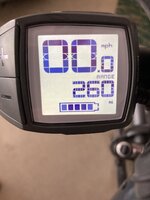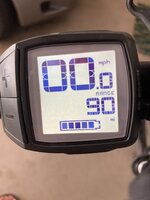Sparky731
Well-Known Member
- Region
- USA
Numerous times I encounter police street radar monitors whereon the speed of oncoming traffic is displayed.
EVERY encounter shows my transport speed as consistently 2 mph SLOWER than what is displayed on my Purion controller.
EX: The radar shows 13mph and the Controller displays 15mph.
Per my simple calculations, this results in an overall reduction in obtainable motor assist speed.
It is consistent between my Trek Verve+3 and my Trek Allant+7s.
Which is most accurate: The police radar, or the Purion controller?
Is this common across all Bosch controllers?
Are we missing out on better performance if the controller is inaccurate?
EVERY encounter shows my transport speed as consistently 2 mph SLOWER than what is displayed on my Purion controller.
EX: The radar shows 13mph and the Controller displays 15mph.
Per my simple calculations, this results in an overall reduction in obtainable motor assist speed.
It is consistent between my Trek Verve+3 and my Trek Allant+7s.
Which is most accurate: The police radar, or the Purion controller?
Is this common across all Bosch controllers?
Are we missing out on better performance if the controller is inaccurate?

